Farmers Weekly Awards: Beef Farmer finalists 2020
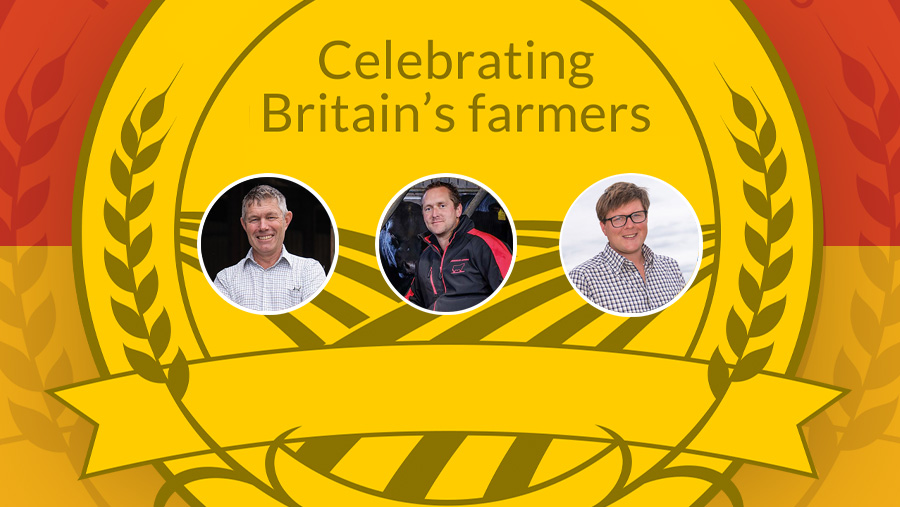
Improving profitability by focusing on delivering a top quality product to the end user was a recurrent theme among all of this year’s finalists, with visits to three very different businesses in Cheshire, Wiltshire and the Isle of Wight.
The 2020 Beef Farmer of the Year finalists:
- Andrew Hodgson
Cheverton Farm, Isle of Wight - Ian Norbury
Mobberley Angus, Cheshire - James Waight
Enford Farm, Wiltshire
The judges are
- Ian and Michael Sturmer
Last year’s winners - Andrew Meredith
Farmers Weekly’s deputy business editor - Ian Cairns
Independent judge and director of Agrifood Technical Services
See also: Farmers Weekly Awards: Beef farmer finalists 2019
Andrew Hodgson
Cheverton Farm, Isle of Wight
Andrew and Claudia Hodgson and family are building a high-quality farm-to-fork beef supply chain that aims to maximise the value of beef finished on their Isle of Wight holding.
This is just one enterprise alongside arable cropping and a number of diversifications they pursue alongside their son, Jack, and 15 full-time members of staff.
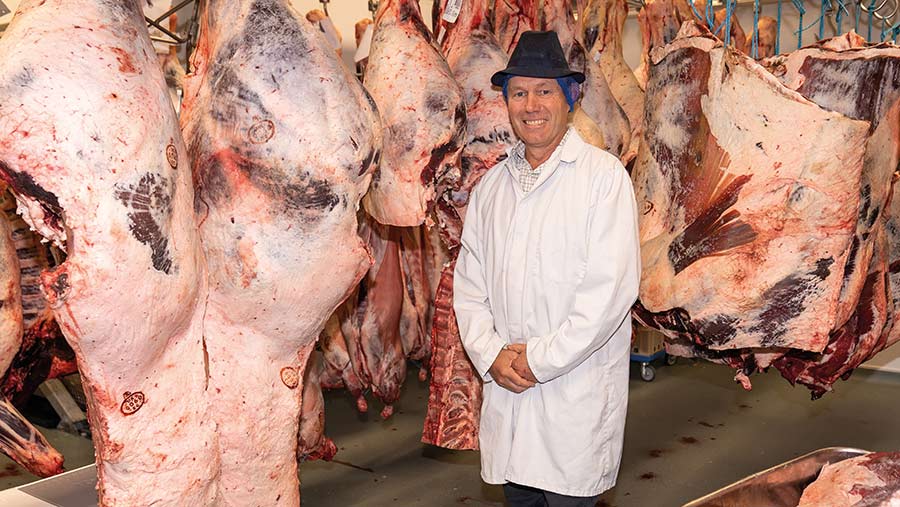
Andrew Hodgson © Tom Askew Miller
They turned the negative of losing a key supermarket supply contract into a positive by seizing control of their own supply chain and establishing the Isle of Wight Beef Company.
The use of the island rather than the farm is a smart move which aims to tap into the strong reputation the island already enjoys for other food products and appeal to a nearby wealthy population hungry for regional food.
An on-farm butchery and dry-aging meat cold store has now been in operation for 12 months, with six full-time members of staff employed to manage butchery and sales.
Business management
All cattle are bought in, with many sourced from other island farmers. Crops are also sourced where possible from across the island, with the business owning, renting, share farming and contract farming some 1,000ha of land across eight holdings.
Both dairy bull calves and weaned suckler bulls and heifers are taken on, with dairy beef brought on to the farm at about 120kg and targeted to be 300kg deadweight within 300 days.
Cattle have to leave the island to be slaughtered, but then return to the farm to be cut up and sold.
Careful monitoring of consumer trends led to Himalayan rock salt being incorporated into the meat store to allow dry-aging of cuts, which can command a significant premium.
Meat was initially being marketed chiefly to butchers and caterers, but the onset of the coronavirus shutdown saw the business pivot to direct selling to consumers, with a van doing deliveries on the island and the mainland.
Nutrition focus
A significant portion of the grass and arable land under management is free-draining chalk, making it better for growing cereals than grass, Andrew says.
It also allows costs to be kept down, with a significant portion of the cattle being fed outside year-round.
A single ration is used across all of the finishers to keep the system as simple as it can be, with home-grown cereals and protein used as often as possible to avoid the high transport costs of importing from the mainland.
Wheat is often the base of the diet, with the focus to produce a high-energy, high-starch feed that will minimise carcass variation between the different types of cattle being reared and finish them rapidly.
Future plans
Cementing the brand’s high-quality status will depend on a number of factors, including having a positive story to tell about the beef’s low carbon footprint, with plans afoot to calculate this precisely.
It is being helped by a reduction in dependence on bagged fertiliser by using sewage sludge, digestate and compost from the farm’s own organic recycling company.
Growing a greater diversity of markets is also essential for a meat marketing business to run successfully, as it in order to find a home for all the different types of cuts.
The latest new customer is an Essex-based biltong manufacturer which is taking a significant amount of silverside, a cut that has fallen out of favour with the consumer.
What the judges said
The Hodgsons have turned the challenge of being isolated from the mainland into a positive with the creation of a quality brand that should provide a good outlet for beef finishers from across the island.
Summary
The judges liked
• Good use of dry outdoor areas for fattening management groups
• Building relationships with other island farmers to mutual benefit through purchase of crops and cattle
• Conservation management of steep scrub land using cattle at low stocking rates
Farm facts
• Specialist finishing unit with no suckler herd • All animals sourced direct from other farmers
• Butchery in operation for about 12 months
• Using local provenance and dry-aging to attract a premium
• Diverse business also has tourism and composting enterprises
The numbers
• 40 Number of years Andrew has been farming on the Isle of Wight
• 8 Number of holdings the business now operates across
• 15 Number of staff employed full-time
• 40p/kg Cost for slaughtering including transport
• £12/t Cost for crops to cross the Solent
Ian Norbury
Mobberley Angus, Cheshire
Ian Norbury is building a low-cost system to produce quality Angus bulls and finished beef from rich Cheshire grassland and home-grown feed.
Under the Mobberley Angus brand he is targeting sales of bulls to local dairy farmers who are looking for a beef sire, as well as trading further afield to suckler producers on higher ground.
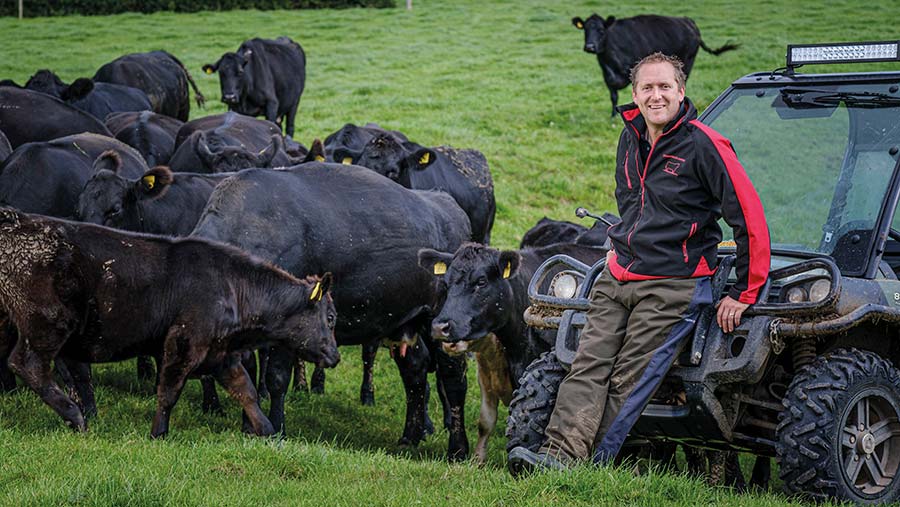
© Jim Varney
Finished cattle are marketed into ABP, with some returning to be sold through local businesses such as the village pub and a barbeque caterer that rents one of a small number of converted buildings on the farm as a storage unit.
Business management
The 100ha farm supports a herd of 120 cows, up from 70 in 2017-18, with a commercial herd running alongside the purebred Angus group.
Ian’s ambition is to grow the herd to 150 cows by retaining home-bred heifers, improve output and continue his mission of minimising fixed costs within the business.
“My main aim is to reduce as many costs as I can and make myself as resilient as possible,” he says.
Production costs are now running at £1.22/kg, down from £1.51/kg when monitoring with the AHDB Farmbench monitoring system began, with an ambition of trimming this back to as little as £1/kg in future.
Nutrition focus
To further this aim he has focused strongly in recent years on extending the grazing period and improving use of his high-output grassland by setting up a rotational grazing platform powered by mains electric fencing.
This has helped slash the time needed to set up paddocks, with further improvements coming from the introduction of back fencing to allow faster regrowth.
This season he has also begun to trial a higher wire adjacent to the next grazing paddock to allow calves to go underneath and have the best grass, allowing cows to be held slightly longer and graze more uniformly.
As an AHDB Strategic Beef and Lamb farmer, Ian is enthusiastic about welcoming other producers onto his farm and is honest about the difficulties he has been facing, as well as what has worked well.
He has worked hard to extend the grazing season by growing forage kale, but says results have been variable, with the weather having a big effect on the success of the crop.
This season he has experienced a further setback, and after poor glyphosate uptake on the field he was planning to spray off to establish the crop, he is now looking at outwintering cattle there on bales instead.
Cattle improvements
Alongside the focus on feed, work is also under way to improve cattle efficiency, with the calving pattern being tightened dramatically from 21 to 12 weeks through increasing bull numbers.
Sires are selected using estimated breeding values, with a focus on easy calving and mature dam weight, with a target to also reduce average cow size from 700kg to 650kg to improve efficiency and keep the carcass size of finished cattle under the maximum weight.
Some cattle will be fit for slaughter at about 16 months from grass alone, Ian says, with the bigger-framed animals fed a grower blend and haylage or silage for 60-90 days to finish them off.
This has seen an average daily liveweight gain of 1.37kg across all the growing animals.
Workload at calving has been significantly helped by a system of feeding in-calf cows late in the evening, which causes more than three-quarters of them to calve in the daytime.
Installation of CCTV for monitoring cows at night was “life-changing”, Ian said, with high-quality units now available for very little cost.
What the judges say
Ian’s focus on grazing efficiency is very well suited to the excellent grass-growing conditions in Cheshire. His creation of the Mobberley Angus brand to represent quality beef should serve him well with farmers and consumers alike.
Summary
The judges liked
• Low-cost forage-based system is making best use of farm’s resources
• Meeting local demand for Angus bulls and quality beef
• Building a strong brand
Farm facts
• 100ha former dairy unit
• Pedigree and commercial Angus herd
• Compact calving block achieved by running bull for just nine weeks
• Ian works alongside his father, Geoffrey, and employee, Jack Ancell
• Breeding bulls marketed through SellMyLivestock and social media
The numbers
• £1.22/kg Cost of production
• £1/kg Target cost of production
• 97% Cows scanned in calf in 2019
• 1.37kg Average daily liveweight gain of growing cattle
• 65% Target to calve in first three weeks
James Waight
Enford Farm, Wiltshire
James Waight is creating a beef finishing system that is successfully straddling the twin objectives of preserving species-rich chalk grassland and producing a high-value product.
The family-run organic beef and arable farm sits mostly on the top of the Wiltshire Plains, and is staffed by James’ wife, Harriet; his parents, Bruce and Lucy; brother, Henry; and three full-time members of staff.
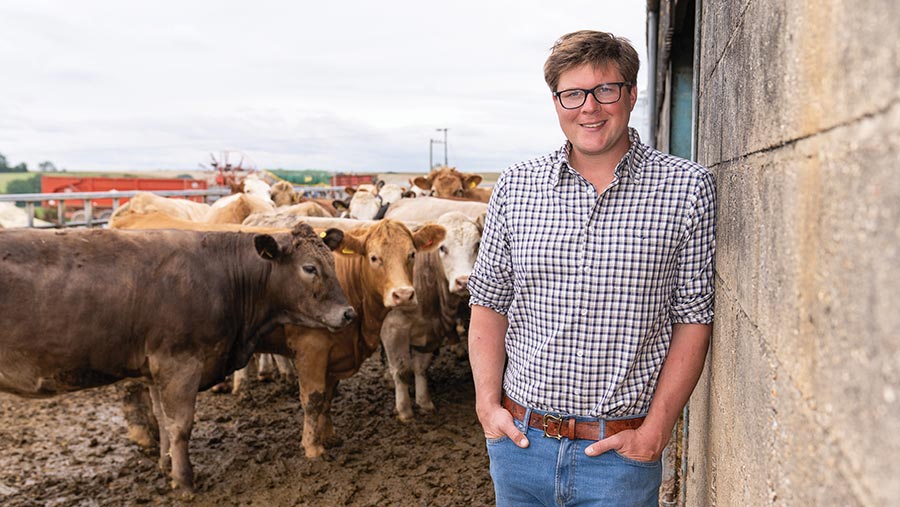
James Waight © Tom Askew-Miller
The land stretches for 15 miles from end to end, with limited fencing, as the chalk grassland is owned by the Ministry of Defence (MOD), meaning the mostly South Devon herd shares half of the 4,400ha it grazes with tanks and soldiers doing live-firing exercises.
Coping with this involves daily conversations with army range masters to keep cattle in electric-fenced paddocks well back from the troops.
Business management
With most of the herd managed outdoors year round, daily checks in the vicinity of exercises have to be completed by 8:00am as firing starts at 8:15.
The 470-head breeding herd is in transition from bought-in Hereford cross Holstein cows to home-bred South Devon- and Angus-sired females to improve biosecurity and herd health.
These are split into a spring- and autumn-calving block, with heifers retained from the autumn herd, allowing them to calve down at two-and-a-half years old.
A Charolais is used as a terminal sire, with a number of bulls purchased from the Lincolnshire-based Cockerington herd as James has a high regard for their focus on polled genetics and easy calving.
Keeping interventions to a minimum alongside docile dams is critical for the outdoor-calving setup, which was implemented to reduce disease.
However, docility is valued year round, with cows often held back by only a single-strand electric fence and often sharing their domain with members of the public, as well as the armed forces.
James says he is proud to work closely with MoD ecologists to preserve the rare chalk grassland, much of which is unimproved and supports a wide range of rare plant and animal species.
Nutrition focus
Cattle graze swathes of the land as little as once a year, managing a mosaic of long, medium and short sward heights among which exist rare butterflies and birds, including 40 of the UK’s 200 breeding pairs of the stone curlew.
Other grass is grazed tighter to avoid the tinder-dry summer land being ignited by exploding shellfire.
The business has switched from previously selling all cattle as weaned stores to fattening the majority, which earn a 40p/kg organic premium, as well as an additional bonus for being home-bred.
These are supported by part of the 600ha arable arm of the farm, run by James’ brother, Henry, which provides organic barley for the ration.
Four cuts a year are also taken from 40ha of lucerne, which is praised for its high protein content and ability to thrive on the dry ground.
Cattle improvements
Perfecting the ration is still a work in progress, with an experiment currently under way to test the effect of adding yeast to it, which has in some circumstances been shown to increase liveweight gains by optimising rumen function.
Improved management of fattening cattle has already seen the average slaughter age come down from 29 to 24 months, with more trials of mixed forage options planned for the future.
James also plans to introduce more regular weighing of cattle and other data collection to further refine maternal genetics, with improved feed conversion efficiency targeted to increase cow profitability.
What the judges say
James and his family are building an enterprise that has a very positive story to tell the consumer about the beef industry, where conservation of rare species is supported by high-welfare beef production.
Summary
The judges liked
• Careful grassland management is creating a habitat for a large number of rare plant and animal species
• The organic system is adding value to the finished product
• Use of lucerne fits in well with the dry land and demand for protein
Farm facts
• 4,000ha Ministry of Defence organic tenancy in Wiltshire
• 470 head of cattle
• South Devon and Angus-cross dams with Charolais terminal sire
• Spring and autumn-block calving
• Chalk grassland allows year-round grazing, but is drought prone
The numbers
• 93% Herd conception rate in 2019
• 600ha Area of organic cereals grown
• 40ha Area of lucerne grown with target of four cuts annually
• 24 Average slaughter age in months
• 65% Percentage of herd that calve in first three weeks
Sponsor’s message
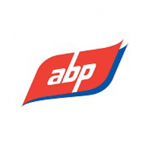 “I would like to recognise the achievements of the finalists who have demonstrated a passion for innovation, an attention to detail and an unwavering commitment to delivering a quality and sustainable product.”
“I would like to recognise the achievements of the finalists who have demonstrated a passion for innovation, an attention to detail and an unwavering commitment to delivering a quality and sustainable product.”
Richard Phelps, UK group agriculture director
